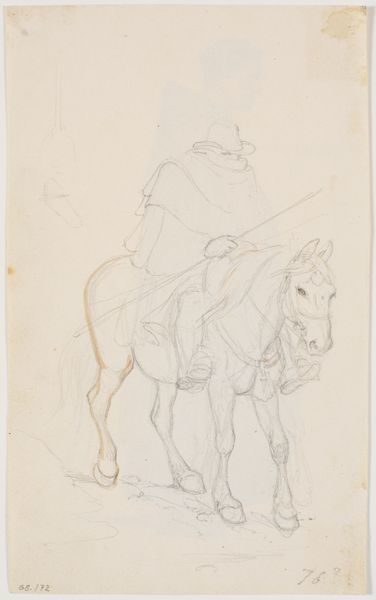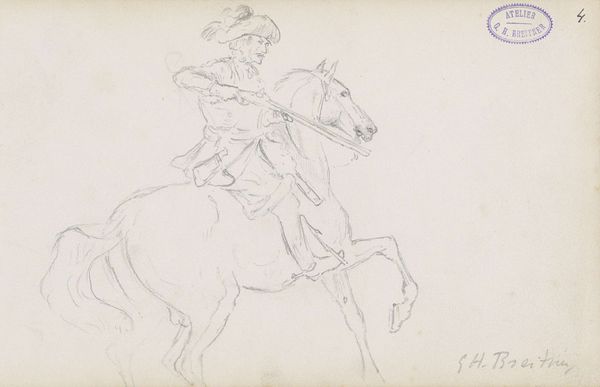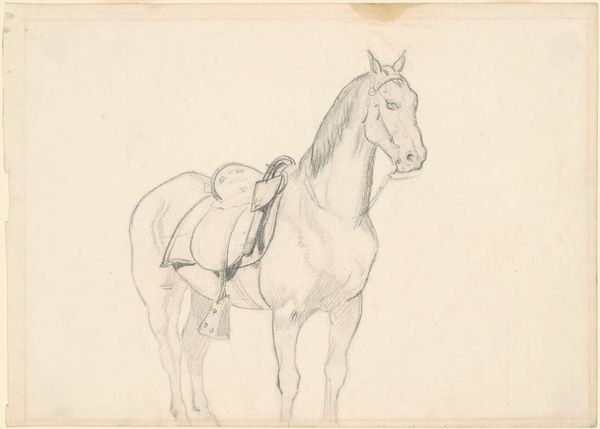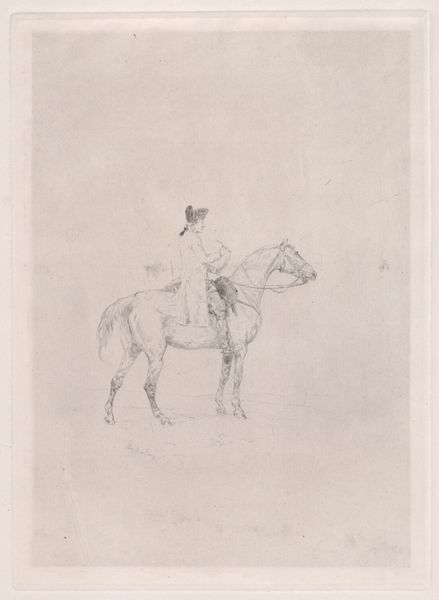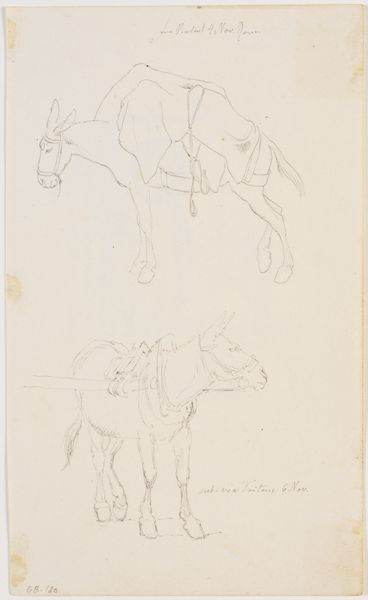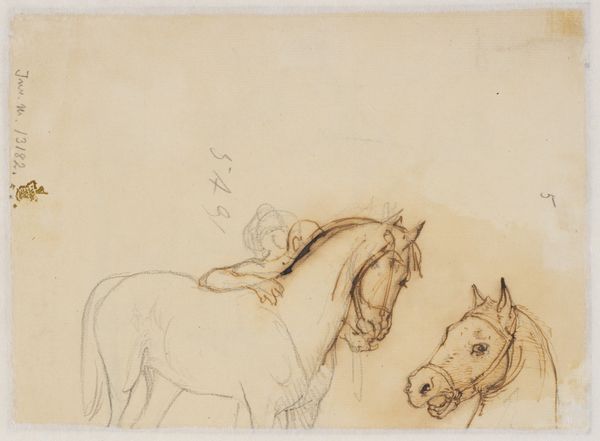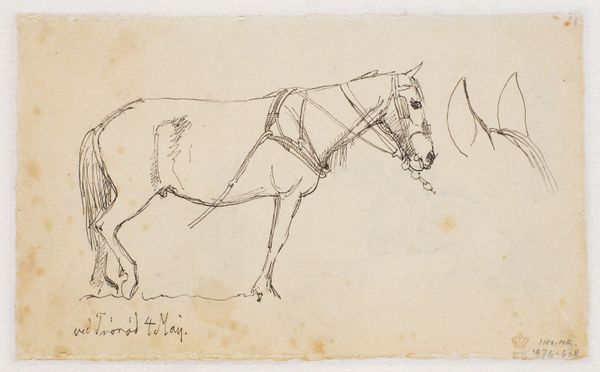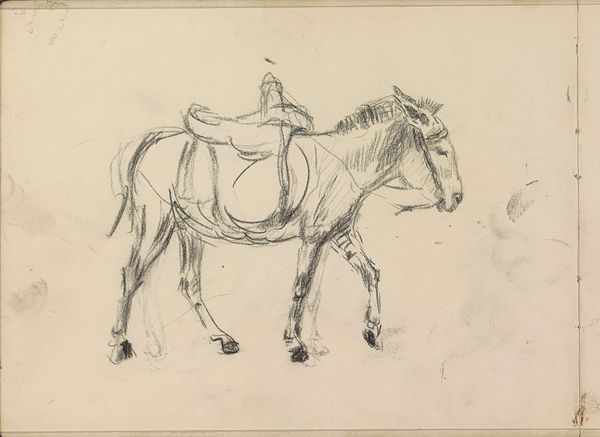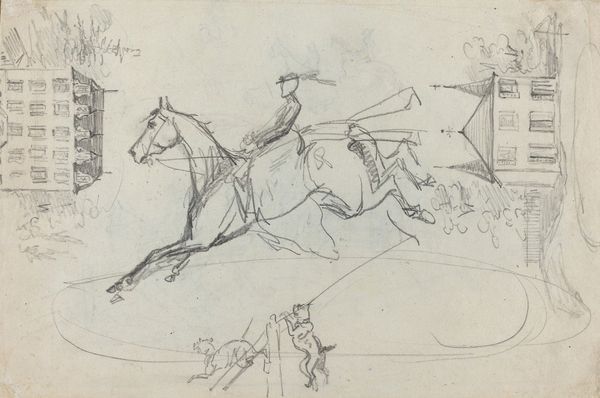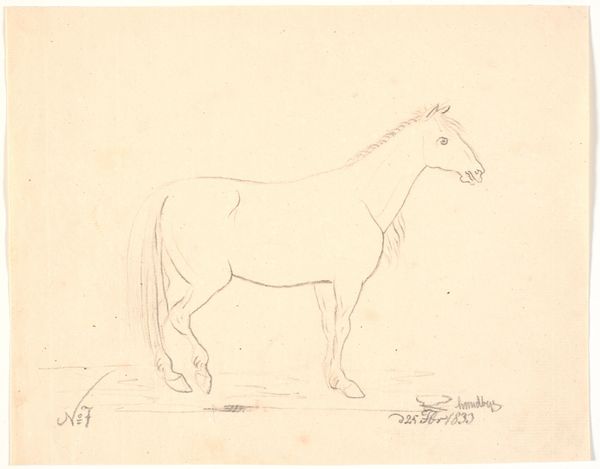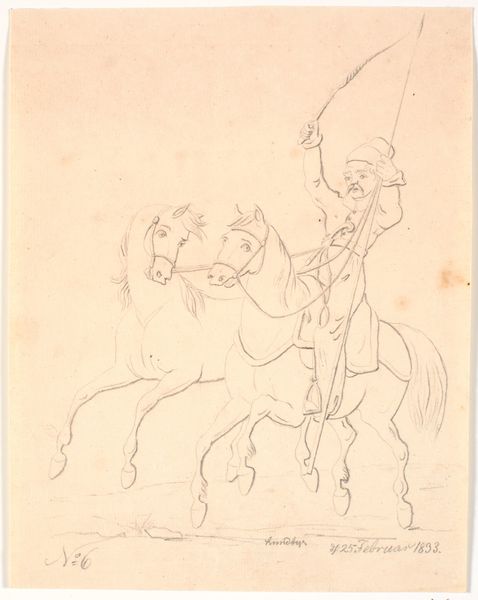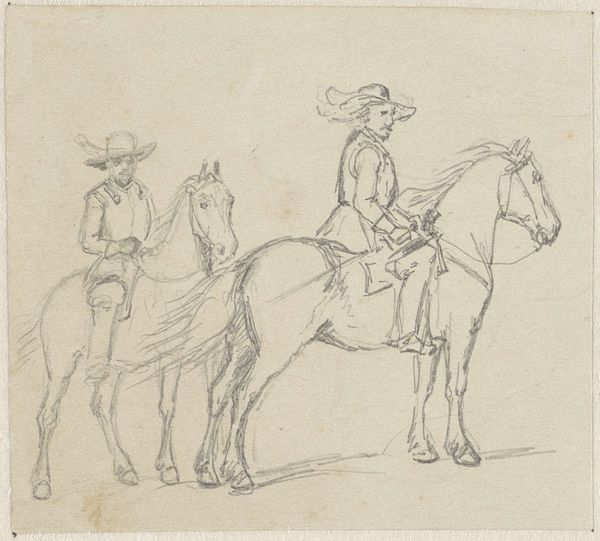
drawing, pencil
#
drawing
#
imaginative character sketch
#
pen sketch
#
landscape
#
figuration
#
personal sketchbook
#
idea generation sketch
#
sketchwork
#
ink drawing experimentation
#
romanticism
#
pen-ink sketch
#
pencil
#
sketchbook drawing
#
genre-painting
#
fantasy sketch
#
initial sketch
Dimensions: 163 mm (height) x 205 mm (width) (bladmaal)
Editor: Here we have Johan Thomas Lundbye's "Soldat til hest," made in 1833. It seems to be a drawing, perhaps a sketch. The lightness of the lines gives it an almost ephemeral feel, like a fleeting thought captured on paper. What strikes you when you look at it? Curator: It’s tempting to view this as merely a preliminary sketch, but let's consider the *act* of sketching itself in 1833. Paper wasn't cheap, pencils and ink had to be carefully produced, and even the time to sit and draw represented a certain social privilege. This wasn't mass production. Do you think Lundbye was conscious of these material realities as he worked? Editor: That's a fascinating point! I hadn't considered the value inherent in the materials themselves. It changes my perspective. Curator: Exactly. What appears simple is, in fact, grounded in the economic and social conditions of its creation. The lines themselves—thin, precise in places, hurried in others—reveal the artist’s hand, his labor. It speaks of a direct engagement with materials. The almost sparse details also allow us to imagine the possibilities inherent in this era. Consider the potential role of the work in military or state infrastructure: What might Lundbye be called on to sketch? How are these forms linked? Editor: I see what you mean. Thinking about the cost of the materials and labor involved really emphasizes the artist's choices. The fact that he chose to depict this soldier, even in a sketch, offers a glimpse into the era’s social values. Curator: Precisely. We move beyond just aesthetic appreciation to an understanding rooted in material conditions. By seeing the production process and thinking about social norms of the time, what we discover becomes truly enriching. Editor: That definitely gives me a deeper understanding. It's not just a drawing; it's a product of a specific time and place. Curator: And that product reveals so much about its world.
Comments
No comments
Be the first to comment and join the conversation on the ultimate creative platform.
